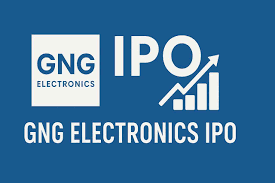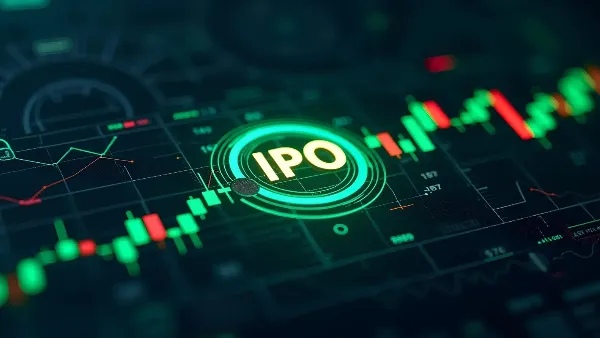
The initial public offering of GNG Electronics Limited, India’s largest refurbisher of laptops and desktops, has generated substantial investor interest with a remarkable grey market premium of ₹100 per share. Operating under the “Electronics Bazaar” brand, the company is positioned to capitalize on the rapidly expanding refurbished electronics market as it prepares for its public debut on July 30, 2025.
Company Overview: Transforming Electronic Waste into Value
GNG Electronics Limited was founded in 2006 and has emerged as a market leader in the refurbished ICT devices sector. The company operates through a comprehensive value chain model, managing everything from sourcing and refurbishment to sales, warranty, and after-sales services. With its headquarters in Mumbai, GNG has established a global footprint spanning 38 countries across North America, South America, Asia, Europe, Africa, and the Middle East.
The company’s refurbishment process involves 21 quality control parameter checks to ensure Grade A product quality. As India’s largest Microsoft Authorized Refurbisher, GNG has also secured certification partnerships with major brands including HP and Lenovo. The company operates five refurbishment facilities strategically located in India, the USA, and the UAE, supporte partners and 4,154 customer touchpoints globally.
Electronics Bazaar Brand Positioning
Operating under the “Electronics Bazaar” brand, GNG has positioned itself as a trusted provider of refurbished IT equipment with a focus on sustainability and affordability. The brand’s value proposition centers on delivering technology that performs like new at significantly reduced prices, typically offering savings of 40–60% compared to new devices. The company provides comprehensive warranties ranging from one to three years on all refurbished products, addressing consumer concerns about reliability and quality.
IPO Structure and Financial Details
The GNG Electronics IPO comprises a total issue size of ₹460.43 crore, structured as a fresh issue of ₹400 crore and an offer for sale (OFS) of ₹60.44 crore. The price band has been set between ₹225–237 per share, with a lot size of 63 shares requiring a minimum investment of ₹14,931 for retail investors.
Fund Utilization Strategy
The company plans to utilize ₹320 crore from the fresh issue proceeds for debt repayment, which will significantly improve its financial position. As of March 31, 2025, GNG’s total outstanding borrowings stood at ₹434.36 crore. The debt reduction will substantially lower interest costs and improve profitability metrics.
The remaining funds will be allocated for general corporate purposes, including potential expansion plans, working capital requirements, and technology upgrades. This strategic use of IPO proceeds demonstrates management’s focus on strengthening the balance sheet while maintaining growth momentum.
Grey Market Premium Analysis: Strong Investor Sentiment
The GNG Electronics IPO has commanded a robust grey market premium of ₹100 per share, indicating an expected listing price of ₹337. This represents a premium of 42.19% over the upper price band of ₹237, reflecting strong investor confidence in the company’s prospects.
GMP Trend Analysis
| Date | GMP (₹) | Expected Listing Price (₹) | Premium % |
|---|---|---|---|
| July 19 | 40 | 277 | 16.9% |
| July 21 | 76 | 313 | 32.1% |
| July 22 | 76 | 313 | 32.1% |
| July 23 | 104 | 341 | 43.9% |
| July 24 | 102 | 339 | 43.0% |
| July 25 | 100 | 337 | 42.2% |
The GMP trajectory shows initial modest interest that significantly accelerated as the IPO opened for subscription, indicating growing investor confidence and strong subscription momentum.
Understanding GMP Risks
While the high GMP suggests positive market sentiment, investors should be aware of several risks associated with grey market trading:
- Lack of regulation: Grey market transactions are unofficial and not regulated by SEBI
- Price manipulation potential: Limited participants can influence GMP through artificial pricing
- Market volatility impact: Broader market conditions can affect actual listing performance regardless of GMP
- Short-term focus: GMP reflects immediate sentiment rather than long-term fundamentals
Subscription Performance: Overwhelming Investor Response

The GNG Electronics IPO achieved remarkable subscription success, with overall subscription reaching 45.75 times by the final day. The category-wise breakdown demonstrates broad-based investor interest:
Subscription Analysis by Category
The extraordinary response from non-institutional investors, with 126.64 times subscription, indicates strong confidence among high-net-worth individuals and smaller institutions. Retail investor participation at 33.76 times demonstrates widespread appeal among individual investors.
Financial Performance: Robust Growth Trajectory
GNG Electronics has demonstrated impressive financial performance with consistent growth across key metrics. The company’s revenue has grown from ₹659.54 crore in FY23 to ₹1,411.11 crore in FY25, representing a compound annual growth rate (CAGR) of 46.27%.
Key Financial Metrics
The company’s improving EBITDA margins from 7.59% in FY23 to 8.94% in FY25 demonstrate operational efficiency gains. The strong return metrics, with ROE at 30.4% and ROCE at 17.31%, indicate effective capital utilization.
Revenue Composition and Geographic Mix
GNG Electronics generates approximately 75.59% of its revenue from laptop sales, with the remaining 24.41% from other ICT devices. Geographically, international markets contribute 75.53% of total revenue in FY25, with significant presence in the USA, Europe, Asia, and UAE.
The geographic revenue distribution shows strategic diversification:
- India: 24.47% (₹345 crore)
- USA: 17.85% (₹252 crore)
- Europe and Asia: 7.01% (₹99 crore)
- Other international markets: 50.67%
Market Opportunity: Riding the Refurbishment Wave
The global refurbished electronics market presents significant growth opportunities driven by sustainability concerns, cost considerations, and digital inclusion initiatives. The global refurbished PC market was valued at approximately ₹96,800 crore in 2023 and is expected to reach ₹1,81,800 crore by 2033, growing at 6.51% annually.
Indian Market Dynamics
The Indian refurbished laptop market is experiencing rapid expansion driven by several factors:
- Cost advantages: Refurbished laptops offer 40–60% savings compared to new devices
- Digital inclusion: Growing demand in Tier‑2 and Tier‑3 cities for affordable computing solutions
- Corporate adoption: Companies integrating refurbished IT hardware for ESG compliance
- Government support: Digital India initiative promoting affordable technology access
The Indian refurbished electronics market grew from USD 0.2 billion in FY19 to USD 1 billion in FY25 at a 28% CAGR and is projected to reach USD 4 billion by FY30 at a 30% CAGR. The organized market share in India increased from 5.2% in FY19 to 13.2% in FY25 with a robust CAGR of 35.5%.
Global Market Trends
The global refurbished computers and laptops market is experiencing strong growth momentum:
- Market size projected to reach USD 10.85 billion by 2029, growing at 6.9% CAGR
- Expected to expand from USD 21.7 billion in 2025 to USD 57.3 billion by 2035 at 10.2% CAGR
- Windows refurbished laptops hold 71.6% market share with 6.1% growth expected
Competitive Landscape: Market Leadership Position
GNG Electronics operates in a competitive landscape featuring both organized and unorganized players. The company has established a strong market position as India’s largest refurbisher of laptops and desktops.
Key Competitive Advantages
Market Leadership: GNG is recognized as India’s largest refurbisher by Microsoft authorization and refurbishing capability
Brand Partnerships: Certified refurbishment partnerships with Microsoft, HP, and Lenovo provide credibility and access to quality inventory
Global Infrastructure: Five strategically located refurbishment facilities enable efficient operations across key markets
Comprehensive Value Chain: End-to-end control from sourcing to after-sales service ensures quality and customer satisfaction
Competitive Challenges
The refurbished electronics market faces several competitive pressures:

- Unorganized sector dominance: The Indian refurbished PC market is heavily dominated by unorganized players creating pricing pressures
- New market entrants: Established technology companies like HP, Asus, and Dell expanding their refurbished offerings
- Online platform growth: E‑commerce platforms like Amazon Renewed, Flipkart Green creating additional competition
Major Global Competitors
The global refurbished electronics market includes several established players:
- Apple Inc. (Apple Certified Refurbished)
- Dell Technologies (Dell Refurbished)
- HP Inc. (HP Renew)
- Lenovo Group (Lenovo Renew)
- Amazon (Amazon Renewed)
- Microsoft Corporation (Surface refurbishment)
- Best Buy (Best Buy Outlet)
Risk Factors: Key Considerations for Investors
While GNG Electronics presents compelling growth opportunities, several risk factors require careful consideration:
Operational Risks
Revenue Concentration: Heavy dependence on laptop sales (75.59% of revenue) creates vulnerability to demand fluctuations
Customer Concentration: Top 10 customers account for approximately 47% of revenue, creating dependency risk
Foreign Exchange Exposure: 75.53% of revenue from international markets exposes the company to currency fluctuations
Inventory Management: Working capital intensive business with inventory turnover declining from 4.9x in FY23 to 2.9x in FY25
Market Risks
Competitive Pressure: Increasing competition from organized players and brand-owned refurbishment programs
Technology Obsolescence: Rapid technology changes affecting demand for older device models
Supply Chain Dependencies: Reliance on procurement partners for quality inventory
Regulatory Changes: Potential changes in e‑waste management and refurbishment regulations
Analyst Recommendations: Positive Outlook
Several brokerage firms have issued positive recommendations for the GNG Electronics IPO:
Arihant Capital: “Subscribe” rating citing the company’s market leadership and growth prospects
Bajaj Broking: “Subscribe for long-term perspective” based on strong fundamentals and sector growth
Nirmal Bang: “Subscribe” recommendation highlighting the global refurbished market growth at 18.9% CAGR and GNG’s position as India’s largest ICT refurbisher
SBI Cap Securities: “Apply” rating recognizing profitability and growth potential
The consensus among analysts is positive, with most recommending subscription based on the company’s market position, financial performance, and sector growth dynamics.
Valuation Analysis: Fair Pricing Assessment
At the upper price band of ₹237, GNG Electronics commands a market valuation of approximately ₹2,702 crore. The valuation metrics appear reasonable considering the company’s growth trajectory and market position:
Valuation Metrics
Price-to-Earnings Ratio: 33.43x based on FY25 earnings
Price-to-Book Ratio: 10.17x based on FY25 book value
Enterprise Value: Approximately ₹3,137 crore including debt
The P/E multiple of 33.43x appears justified given the company’s growth profile and market leadership position. The strong ROE of 30.4% and ROCE of 17.31% support the premium valuation.
Peer Comparison
Compared to Newjaisa Technologies Limited, the only listed peer in the refurbished electronics space, GNG demonstrates superior financial metrics across all parameters. The company’s revenue scale, profitability, and operational efficiency significantly outperform its listed peer.
Environmental and Social Impact: ESG Leadership
GNG Electronics has positioned itself as a leader in environmental sustainability through its refurbishment business model. The company’s ESG initiatives include:
Environmental Benefits
Carbon Emission Reduction: Refurbishment process reduces carbon emissions by up to 50% compared to manufacturing new devices
E‑waste Management: Company processes electronic waste from corporations, extending device lifecycles and reducing landfill burden
Circular Economy Model: Promotes reuse and recycling principles aligned with global sustainability goals
Resource Conservation: Refurbishment requires significantly fewer raw materials and energy compared to new manufacturing
Social Impact
Digital Inclusion: Makes technology accessible to underserved communities through affordable pricing
Employment Generation: Provides skilled employment opportunities in refurbishment and related services
Corporate E‑waste Solutions: Helps organizations manage electronic waste responsibly
Educational Support: Supports digital learning initiatives through affordable device access
Technology and Innovation: Staying Ahead
GNG Electronics leverages technology and innovation to maintain its competitive edge:
Refurbishment Technology
Quality Control Systems: 21-parameter quality checks ensure consistent product standards
Data Sanitization: Industry-standard protocols for secure data removal
Diagnostic Tools: Advanced testing equipment for component evaluation and repair
Inventory Management: Sophisticated systems for tracking and managing diverse product mix
Digital Capabilities
E‑commerce Platform: Electronics Bazaar website enables direct consumer sales
Customer Service Systems: Magento-based platform for efficient complaint management
Supply Chain Technology: Digital systems for procurement partner management
Quality Assurance: Automated testing and certification processes
Future Growth Strategy: Expansion Plans
GNG Electronics has outlined a comprehensive growth strategy focusing on multiple dimensions:
Geographic Expansion
Market Penetration: Deeper penetration in existing markets through enhanced distribution
New Geography Entry: Expansion into additional countries and regions
Facility Development: Potential establishment of new refurbishment centers
Product Diversification
Device Portfolio Expansion: Inclusion of additional ICT device categories
Service Enhancement: Extended warranty and maintenance offerings
Custom Solutions: Tailored refurbishment services for enterprise clients
Partnership Development
OEM Relationships: Strengthened partnerships with major technology brands
Procurement Network: Expansion of supplier base for quality inventory
Distribution Channels: Development of new sales and distribution partnerships
Investment Thesis: Strong Fundamentals Meet Market Opportunity
The investment case for GNG Electronics is built on several compelling factors:
Growth Drivers

Market Leadership: Established position as India’s largest laptop and desktop refurbisher
Scalable Business Model: Asset-light operations with strong cash conversion potential
Secular Growth: Beneficiary of global trends toward sustainability and circular economy
Geographic Diversification: Balanced revenue mix across multiple international markets
Financial Performance: Consistent growth in revenue, profitability, and margins
Value Creation Opportunities
Debt Reduction: IPO proceeds will significantly improve capital structure
Margin Expansion: Operational leverage and efficiency gains driving profitability
Market Share Gains: Organized market share growth in fragmented industry
ESG Premium: Increasing corporate focus on sustainable technology solutions
Listing Timeline and Key Dates
The GNG Electronics IPO follows a structured timeline leading to listing:
Important Dates
| Event | Date |
|---|---|
| IPO Opening | July 23, 2025 |
| IPO Closing | July 25, 2025 |
| Basis of Allotment | July 28, 2025 |
| Refund Initiation | July 29, 2025 |
| Share Credit | July 29, 2025 |
| Listing Date | July 30, 2025 |
The company raised ₹138 crore from anchor investors before opening for public subscription, indicating institutional confidence.
Risk Mitigation Strategies
GNG Electronics has implemented several strategies to address key business risks:
Operational Risk Management
Diversification Initiatives: Expanding beyond laptop refurbishment to reduce concentration risk
Customer Base Expansion: Building relationships with new customers to reduce dependency
Geographic Hedging: Natural currency hedging through global operations
Inventory Optimization: Improved procurement and inventory management systems
Financial Risk Controls
Debt Management: Strategic use of IPO proceeds for debt reduction
Working Capital Optimization: Focus on improving asset turnover ratios
Currency Management: Natural hedging through international operations
Cash Flow Management: Strong cash generation from operations
Sector Outlook: Favorable Long-term Trends
The refurbished electronics sector benefits from several long-term structural trends:
Sustainability Imperative
Corporate ESG Mandates: Companies increasingly adopting sustainable IT practices
Government Regulations: Stricter e‑waste management requirements driving organized sector growth
Consumer Awareness: Growing environmental consciousness among technology users
Economic Factors
Cost Optimization: Businesses seeking cost-effective technology solutions
Digital Inclusion: Government and private sector initiatives promoting affordable technology access
Circular Economy: Global shift toward resource conservation and reuse
Technology Evolution
Device Standardization: Mature technology platforms enabling effective refurbishment
Quality Improvements: Enhanced refurbishment processes delivering near-new performance
Warranty Extensions: Longer warranty periods increasing consumer confidenc

Leave a Reply